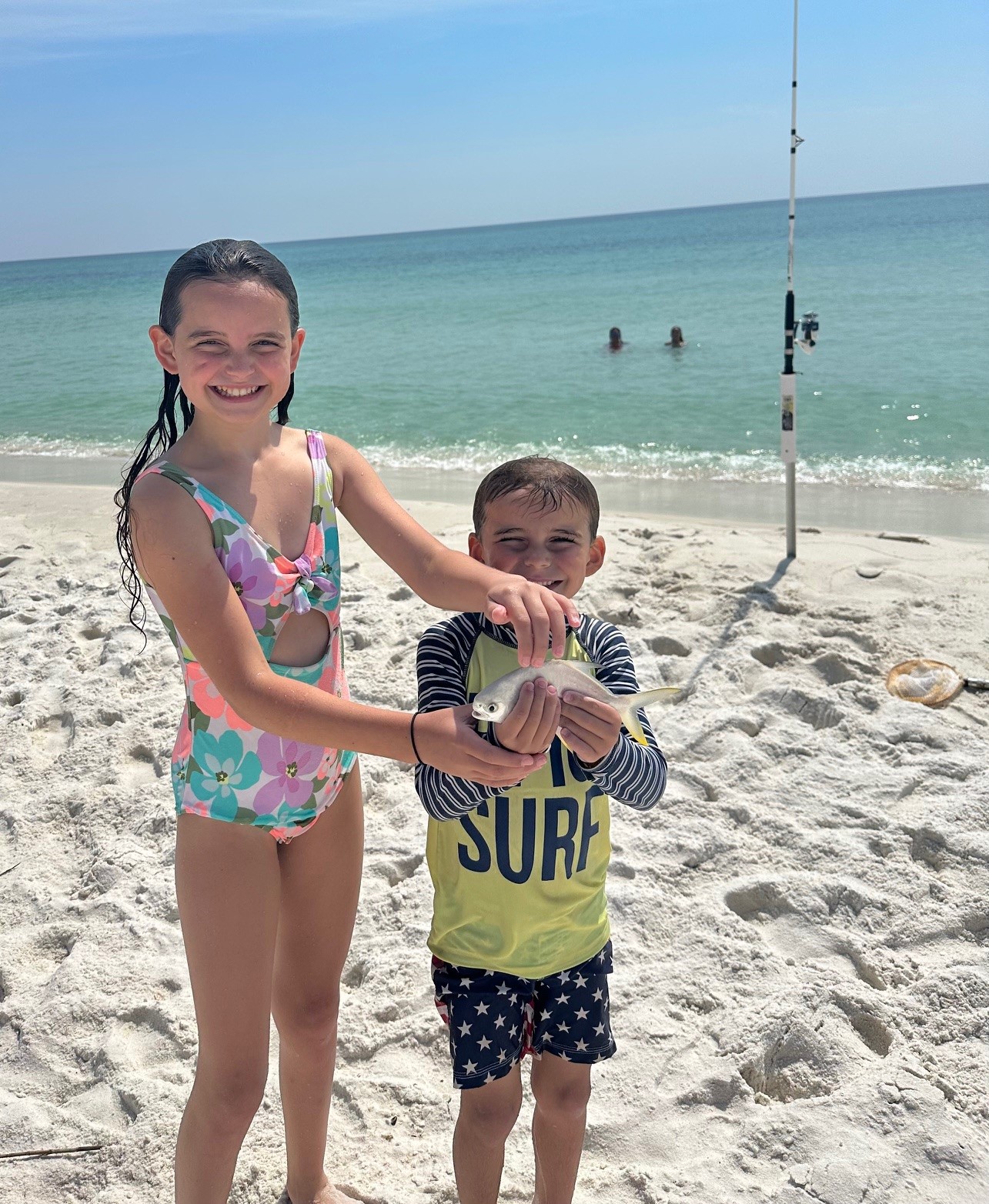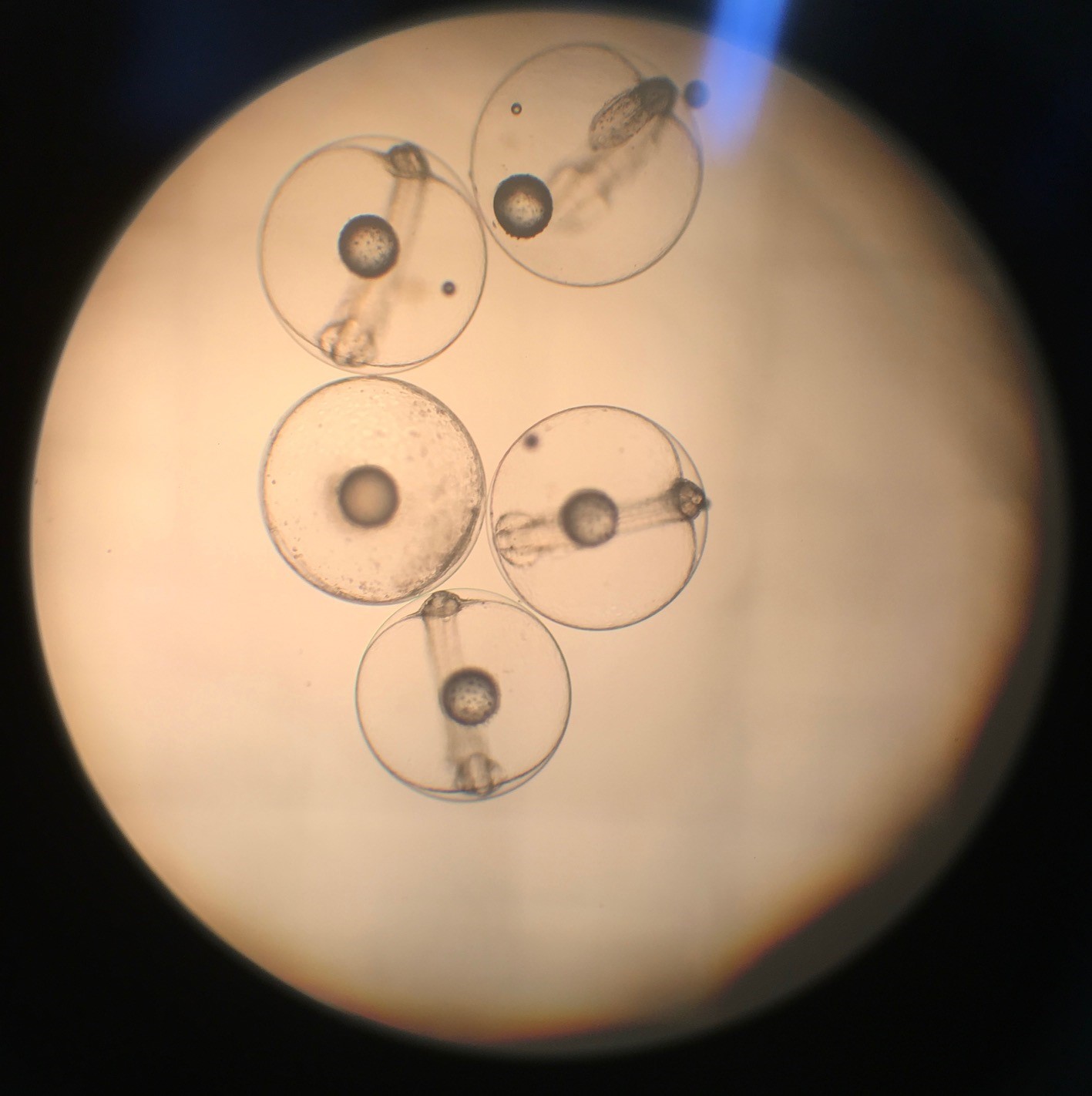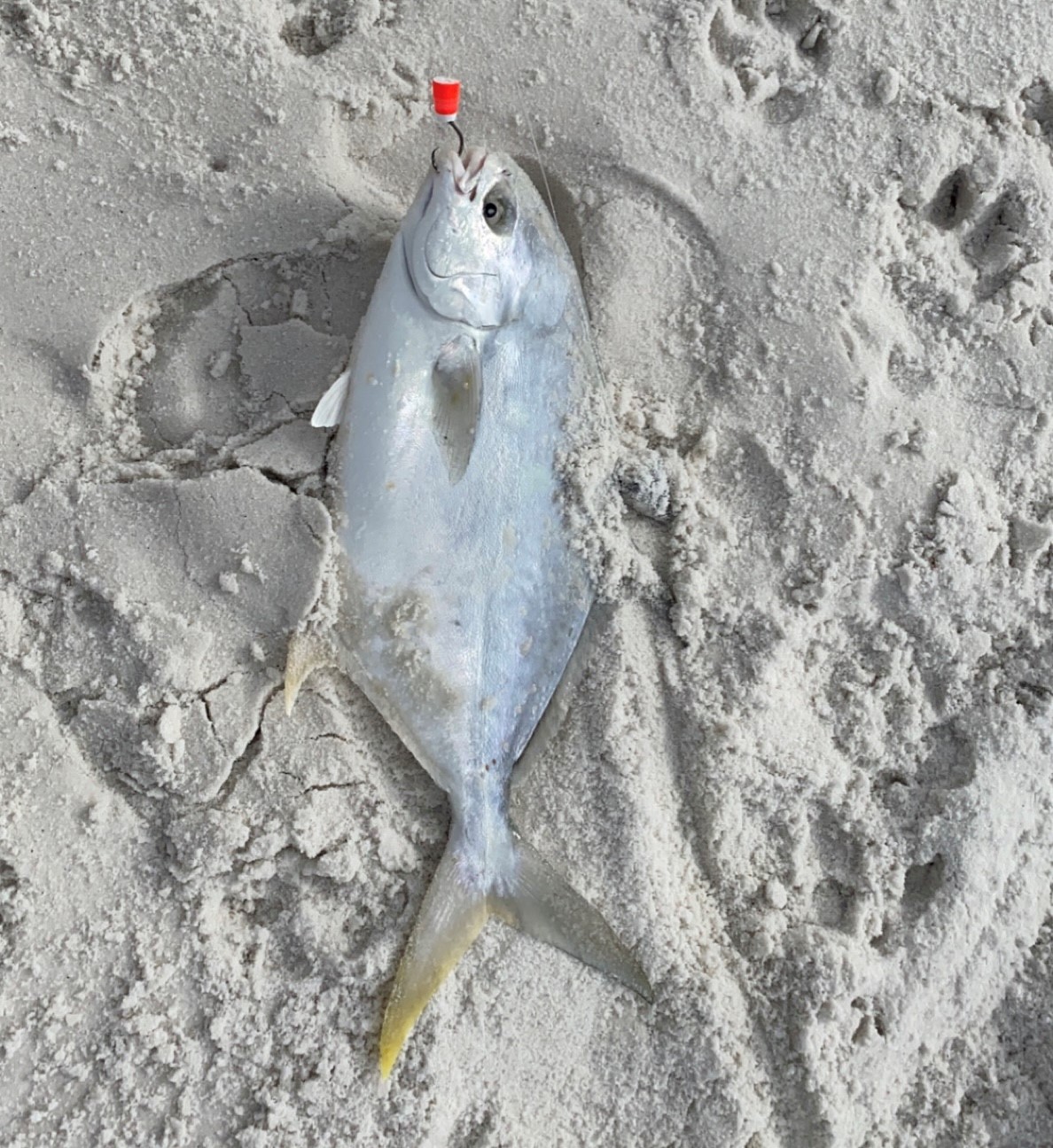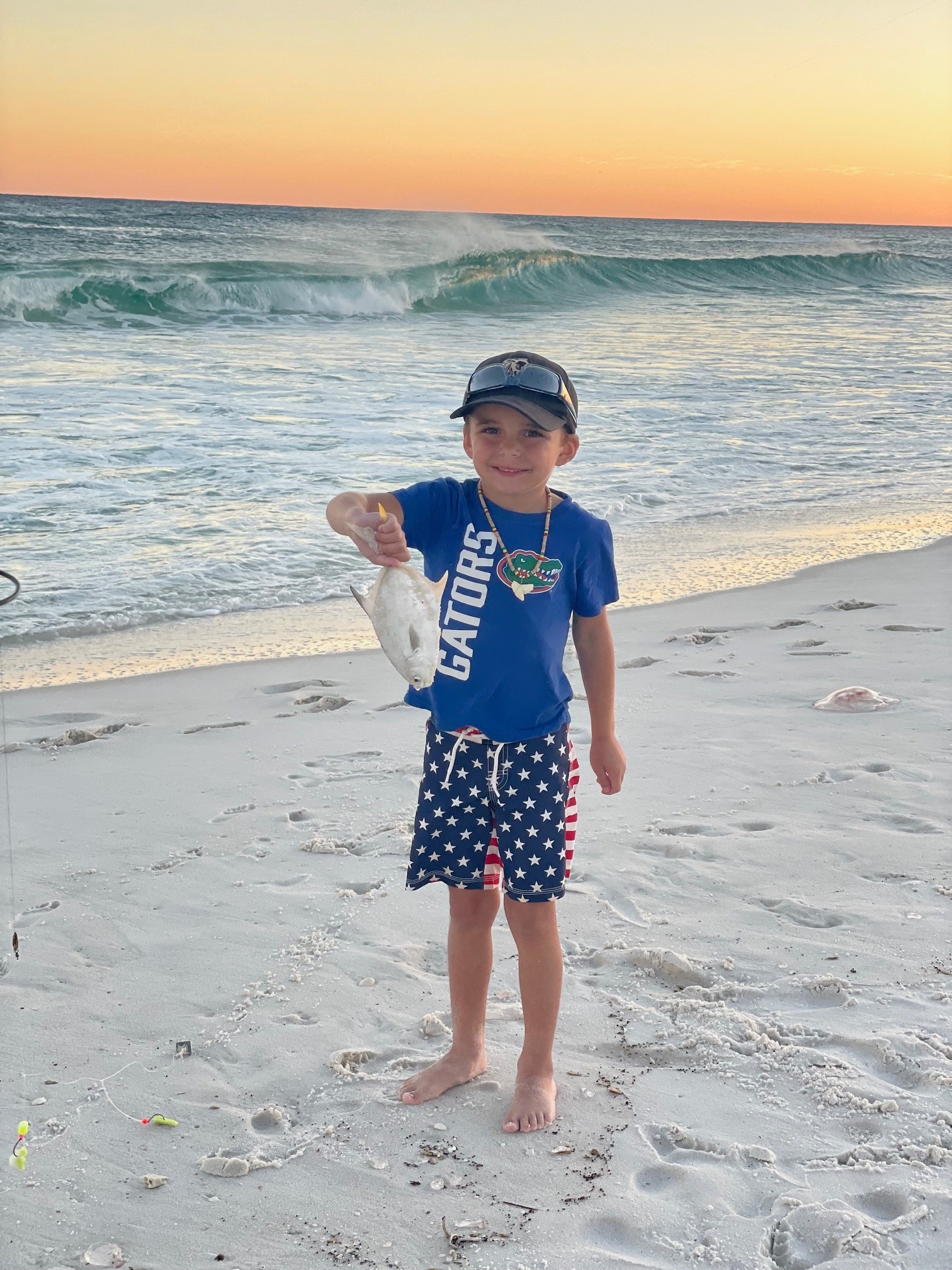Pompano?! More like Pompa-YES! Growing up in the Panhandle of Florida, I was exposed to many great fishing seasons and opportunities, from the Cobia (Rachycentron canadum) run in the spring to the “Bull” Red Drum (Sciaenops occelatus) run of the fall, but my absolute favorite season was the Florida Pompano (Trachinotus carolinus) run on the beaches. While I enjoyed being on the boat scouring the beaches with a small bucktail jig, casting at sliver flashes in the cuts of the sandbar, I had my most memorable trips on the beach with a few rods, sand spikes, and a “flea rake.” There were no bad days on the beach (as they say, it’s better than a day in the office), and when you happen upon a honey hole, it makes for an incredible day with very little effort and usually an incredible dinner to follow. Since we are rapidly approaching peak pompano season, I will pay homage to the “Silver Surfers of the Emerald Coast” with a little overview of the life of a Florida Pompano.

Florida Pompano have a very wide range, from Massachusetts to Brazil, and are a member of the family Carangidae (aka the Jack Family). It is a very popular sport and commercial fishery, and its rapid growth rate makes it a prime candidate for aquaculture. Florida Pompano are highly migratory fish, and they can run from the Florida Keys all the way to Texas and back in a season. In the Florida Panhandle, the Florida Pompano run starts in April/May lasting until July, with a bonus fall run in October/November when they are returning south. When fishing off the sandy beaches of the Florida Panhandle, you can run into its cousins the Permit (Trachinotus falcatus) and Palometa (Trachinotus goodei) who often get mistaken for a Florida Pompano. Another thing they have in common with Florida Pompano is their love of crustaceans including the Mole Crab (aka Sand Fleas) (Emerita portoricensis) and Atlantic White Shrimp (Litopenaeus setiferus).
Just like most members of the family Carangidae, Florida Pompano are considered “batch spawners.” A batch spawner is when a female releases her eggs into the water column and a male simultaneously releases his sperm into the water column. Female Florida Pompano can release upwards of 800,000 eggs per spawning season, and Florida Pompano typically head offshore in early spring to October in the Gulf of Mexico to spawn, and their juveniles return to the beach to grow along the shoreline. Florida Pompano can reach an aquaculture harvest size of 12 inches within one year, and males reach maturity in 1 year whereas females mature after 2 to 3 years.

When it comes to table fare, Florida Pompano ranks very high on my personal fish list, and many chefs love serving pompano at their restaurants due to the great, mild taste and fillets that are of even thickness. Their diet of crustaceans helps yield a buttery, almost crab flavor and the meat is very flaky and white. There are many preparation techniques for Florida Pompano, from grilled whole to pan-fried, and pompano have even inspired their own cooking technique, “Pompano en Papillote,” or baking pompano in parchment paper.

When fishing for Florida Pompano off the beach, most anglers employ a large rod (usually a 10ft rod) with a 20lb fluorocarbon double drop loop rig and pyramid weight. The larger rod allows for maximum casting distance from the beach, giving beach anglers a chance to reach behind the first sandbar. Most anglers will bring either fresh dead shrimp or a flea rake with them to catch the prized bait, mole crabs. Pro tip, when casting out the rods, make sure you have a bait close to the shore in the “trough” and not just past the sandbar. (Learn More About Rigging Here!) If you plan to harvest a Florida Pompano, make sure you check your local regulations. In the Florida Panhandle, Florida Pompano must be 11 inches (fork-length) or larger with a daily limit of 6 per angler.

I hope you have enjoyed this profile for the Florida Pompano. Now is the time to get your rods out of storage and ready to hit the beach!
References
Main, K., Rhody, N., Nystrom, M., & Resley, M. (2007). Species Profile – Florida Pompano. Southern Regional Aquaculture Center Fact Sheets. https://fisheries.tamu.edu/files/2013/09/SRAC-Publication-No.-7206-Species-Profile-Florida-Pompano.pdf
- Aquaculture 101: Aquaculture in The USA - May 12, 2025
- Aquaculture 101: The History of Aquaculture - April 25, 2025
- A Northwest Florida Winter Wonderland - January 31, 2025
